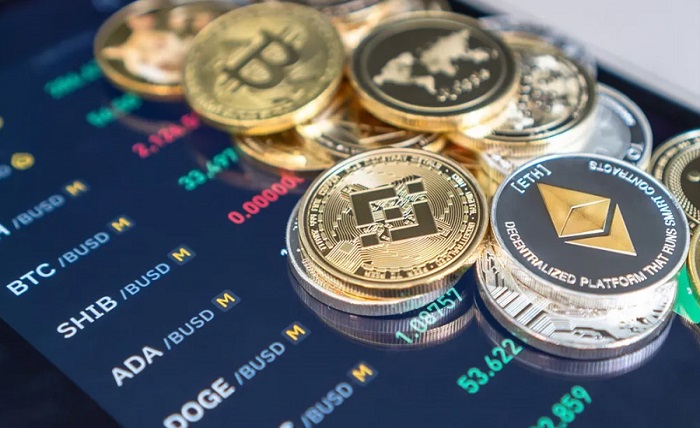Welcome to the fascinating world of cryptocurrencies, where news is dominated by Bitcoin, Ethereum, and a multitude of other digital assets. If you’re an investor in this market, you may be aware of the value of diversifying your cryptocurrency holdings, but did you know that altcoins might be absolutely essential to reaching that objective?
Let’s start by discussing diversification. Investing is a risky endeavour, so never put all your eggs in one basket. You can lower your risk and possibly boost your rewards by diversifying your investments across various assets. This is particularly true in the erratic world of cryptocurrencies, where prices can change dramatically in a matter of hours.
here come altcoins. Any digital assets that are not Bitcoin are known as altcoins, or alternative cryptocurrencies. While Bitcoin continues to dominate the cryptocurrency market, other coins have a variety of features and applications that can enhance and complete your portfolio. Altcoins present special chances for investors to diversify their holdings and maybe earn higher returns. These options range from privacy-focused coins like Monero to smart contract platforms like Ethereum.
How do Altcoins work?
As an alternative to Bitcoin, the original and most well-known cryptocurrency, altcoins are digital assets. There are thousands of alternative coins that each provide distinctive features and use cases, yet Bitcoin continues to be the biggest and most prominent player in the cryptocurrency market.
A number of factors, including the underlying technology, mining algorithms, and transaction speeds, set altcoins apart from bitcoin. For instance, the altcoin Ethereum is well-known for its smart contract features, which let programmers create decentralised apps on its blockchain. To solve problems with Bitcoin, like as long transaction times and hefty fees, other cryptocurrencies, like Litecoin, were developed.
Since Namecoin was developed in 2011 as a decentralised domain name system, cryptocurrencies have existed. Since then, a wide range of alternative coins have been created for various uses, from privacy-focused coins like Monero to tokens that are used for certain purposes within decentralised systems. The altcoin market presents both investors and developers with a multitude of options, despite the fact that it may be unpredictable and risky.
The Advantages of Diversifying Your Crypto Portfolio with Altcoins
By lowering risk and perhaps improving returns, altcoins can be extremely important in ensuring that a portfolio of cryptocurrencies is diversified. An investor who exclusively invests in Bitcoin or other well-known cryptocurrencies is subject to the dangers and volatility of those particular assets. However, an investor can diversify their risk across various assets and possibly profit from each one’s unique characteristics by investing in a variety of cryptocurrencies with various use cases and features.
Additionally, using altcoins to diversify can have benefits over using simply the more well-known cryptocurrencies. For instance, even while Bitcoin may be the biggest and best-known cryptocurrency asset, it may not always provide the best returns or be the best fit for all investors’ objectives. An investor may discover prospects for higher returns or more specialised investments that better correspond with their unique investment plan by researching the wide variety of cryptocurrencies that are readily available.
Alternative Currency Risks
Altcoins have a lot of promise to diversify a cryptocurrency portfolio, but they also carry some hazards. The volatility of the altcoin market, which can be far more unpredictable than that of large cryptocurrencies, is one of the biggest concerns. As more new and unproven initiatives emerge, there is also a growing chance of frauds and fraudulent projects in the cryptocurrency market.
Investors should conduct extensive due diligence on any alternative currency they are thinking about investing in to reduce these dangers. This include learning more about the project team, reviewing the whitepaper, and examining the altcoin’s possible applications and market demand. Additionally, investors need to be wary of estimates that are too optimistic or make guarantees of returns.
Additionally, rather than putting all their eggs in one basket, investors should think about diversifying across a number of alternative coins. Investors can lower their risk exposure and possibly profit from the advantages of each distinct asset by spreading their money across a variety of alternative currencies. Overall, while investing in alternative currencies might be hazardous, it can also offer significant potential for growth and profits with the right research and diversification.
The Best Alternative Coins for Your Portfolio
Given the plethora of options available, selecting the ideal cryptocurrencies for your portfolio might be difficult. Market capitalization, the project team, and community support are just a few of the variables to take into account while assessing alternative coins. A crucial indicator for assessing an altcoin’s popularity and liquidity is market capitalisation. The project’s quality and potential can also be determined by looking at the project team and their past performance. Last but not least, community support can reveal the extent of adoption and interest in an altcoin, which might influence its potential for long-term growth.
When selecting alternative coins for your portfolio, you should also take into account their prospective applications, market demand, underlying technology, and security aspects. Investors can make educated judgements and compile a diverse portfolio of alternative currencies that complements their investing objectives and risk tolerance by carefully investigating and assessing these variables.
Some Alternative Coins to Think About
In the cryptocurrency industry, there are several altcoins that offer distinctive qualities and expansion possibilities. Ethereum is a well-known alternative currency that operates as a foundation for developing decentralised programmes and smart contracts. Its many and varied potential applications range from decentralised banking to non-fungible coins. Another potential altcoin is Binance Coin, which is used to pay Binance exchange costs and provides customer discounts. In recent years, the altcoin has experienced substantial growth and has branched out beyond the exchange to incorporate additional use cases like NFTs and gaming. A more secure and scalable platform for smart contracts and decentralised apps is what Cardano, an altcoin, intends to offer. High expectations have been placed on its potential influence on the cryptocurrency market because to its novel proof-of-stake consensus method and emphasis on sustainability. Overall, given the changing cryptocurrency world, these altcoins provide distinctive traits and growth potential.
Conclusion
The potential for diversifying a cryptocurrency portfolio and generating higher profits through altcoin investment is enormous. When added to a cryptocurrency portfolio that is too highly weighted in main cryptocurrencies like Bitcoin, altcoins provide distinctive features and possible use cases that can give diversification benefits.
It’s crucial to keep in mind that investing in alternative currencies entails risk, including volatility and the possibility of fraud and shady ventures. Investors should thoroughly investigate and assess alternative currencies before making an investment to reduce these risks, and they should think about spreading their holdings over a number of alternative currencies rather than placing all their eggs in one basket.
In general, diversification is essential for investors in the vibrant and always changing crypto market. Investors can develop a diversified portfolio of alternative coins that is in line with their investment objectives and risk tolerance by carefully evaluating a number of variables, including market capitalization, project team, community support, and prospective use cases. Altcoin investments can be a lucrative and intriguing addition to any crypto portfolio with careful planning and due diligence.
Read More You May Like:














Post Comment